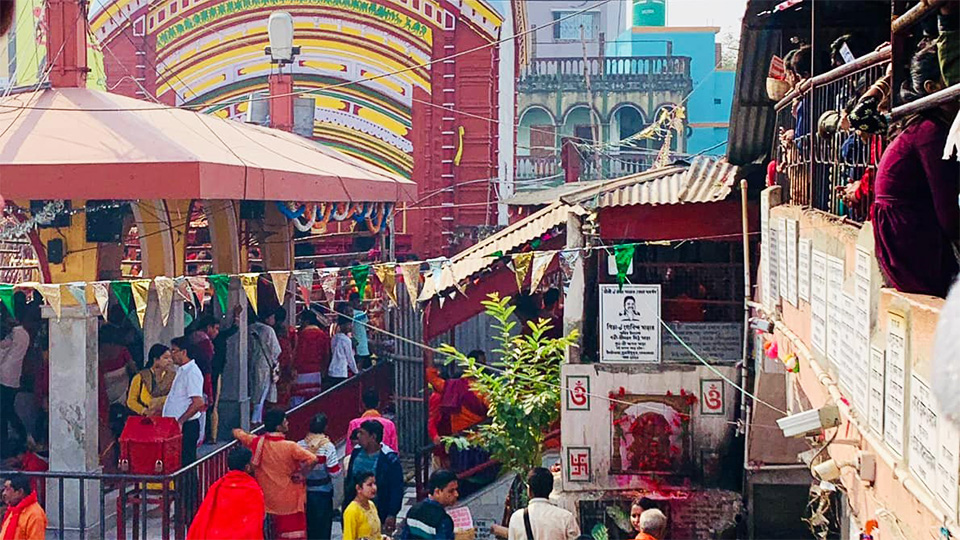Kaushiki Amavasya, also known as the “Night of the Stars,” is a significant religious event for Hindus, particularly those who worship the Goddess Kali. It falls on the Amavasya (new moon day) of the Hindu month of Bhadrapada.
What is Kaushiki Amavasya?
Kaushiki Amavasya is a significant lunar event celebrated in Hindu culture, falling on the new moon day (Amavasya) of the Hindu month of Chaitra. This day is dedicated to the worship of Goddess Kaushiki, a manifestation of the divine feminine energy. Amavasya generally symbolizes reflection and purification, and Kaushiki Amavasya holds a special place among the various Amavasya observances, known for its spiritual and mythological importance.
Historical and Mythological Significance of Kaushiki Amavasya
The origins of Kaushiki Amavasya are deeply rooted in Hindu mythology. According to the legend, Goddess Kaushiki was born from the collective energy of the gods to defeat the demon Daruka, who threatened the cosmic balance. The gods, unable to defeat him due to his boon of invincibility, invoked the goddess to restore peace. Kaushiki, with her unparalleled strength and grace, ultimately vanquished Daruka. This victory is celebrated on Kaushiki Amavasya, emphasizing the triumph of good over evil and the importance of divine intervention.
Rituals and Traditions of Kaushiki Amavasya
Kaushiki Amavasya is observed with various rituals and practices aimed at seeking blessings, purification, and spiritual growth. Many devotees observe a day-long fast, refraining from food and water, as an act of devotion and penance.
Some Rituals of Kaushiki Amavasya
- Worship of Goddess Kaushiki: Devotees offer prayers, chant mantras, and light lamps in her honor, seeking her blessings for health, prosperity, and protection.
- Sacred Bathing: Many people believe that taking a holy dip in sacred rivers or water bodies on this day can cleanse them of sins and rejuvenate their spirit.
- Offerings: Devotees often prepare special food items and offer them at local temples or shrines, including fruits, sweets, and rice.
Cultural Celebrations on the Occasion of Kaushiki Amavasya
Kaushiki Amavasya is celebrated with enthusiasm across various regions in India. The rituals and festivities may vary but share a common thread of devotion and community spirit. Local fairs, community gatherings, and religious processions are often organized, bringing people together to celebrate the goddess’s glory.
In some regions, the day is marked by cultural performances, including traditional music and dance, highlighting the rich heritage associated with this auspicious occasion. The sense of community and shared spirituality reinforces the bonds between individuals, making the celebration even more special.
Spiritual Significance of Kaushiki Amavasya
The day of Kaushiki Amavasya is not only a time for rituals but also an opportunity for personal reflection and spiritual cleansing. Many devotees use this day to meditate, focusing on their inner thoughts and seeking forgiveness for past mistakes.
The new moon represents new beginnings and fresh starts. Engaging in spiritual practices on this day is thought to enhance mental clarity and emotional well-being, allowing individuals to let go of negativity and embrace positivity.
Why is Kaushiki Amavasya Considered So Auspicious?
Kaushiki Amavasya is a highly auspicious day in the Hindu calendar, particularly for devotees of Goddess Kali. It is believed that on this night, Goddess Kali incarnated as Goddess Kaushiki to vanquish evil forces and restore dharma. Additionally, sage Bamakhyapa attained enlightenment on this night. The clear night sky and powerful celestial alignments make it an ideal time for spiritual practices and meditation. Devotees flock to temples, especially those dedicated to Goddess Kali, to offer prayers and seek blessings. The day is marked by special rituals, pujas, and a strong spiritual energy.
Tarapith on the Day of Kaushiki Amavasya
Tarapith on Kaushiki Amavasya is a sight to behold. This sacred pilgrimage site, dedicated to Goddess Tara, becomes even more significant on this auspicious day. Thousands of devotees flock to the temple to offer their prayers and seek blessings from the divine. The nearby Maha Sasana sees increased footfall, as visitors perform rituals, take holy dips, and seek blessings
Here’s a glimpse into what makes Tarapith special on this day:
- Spiritual Significance: It is believed to be the night when the sage Bamakhyapa attained enlightenment and had a vision of Goddess Tara. This makes Tarapith a particularly powerful place for spiritual seekers.
- Crowded Temple: The temple is packed with devotees, creating a vibrant and energetic atmosphere.
- Special Rituals: Special rituals and pujas are performed throughout the day and night, attracting both local and international visitors.
- Stargazing: The clear night sky, free from the moon’s light, offers an excellent opportunity for stargazing, adding to the spiritual significance of the night.
Kaushiki Amavasya is a day filled with spiritual significance, rich traditions, and cultural celebrations. It serves as a reminder of the power of the divine feminine and the triumph of good over evil. Observing this day can be a profound experience, providing opportunities for reflection, purification, and connection to the sacred. As the lunar cycles influence our lives, participating in rituals offers a chance to embrace renewal and transformation.





